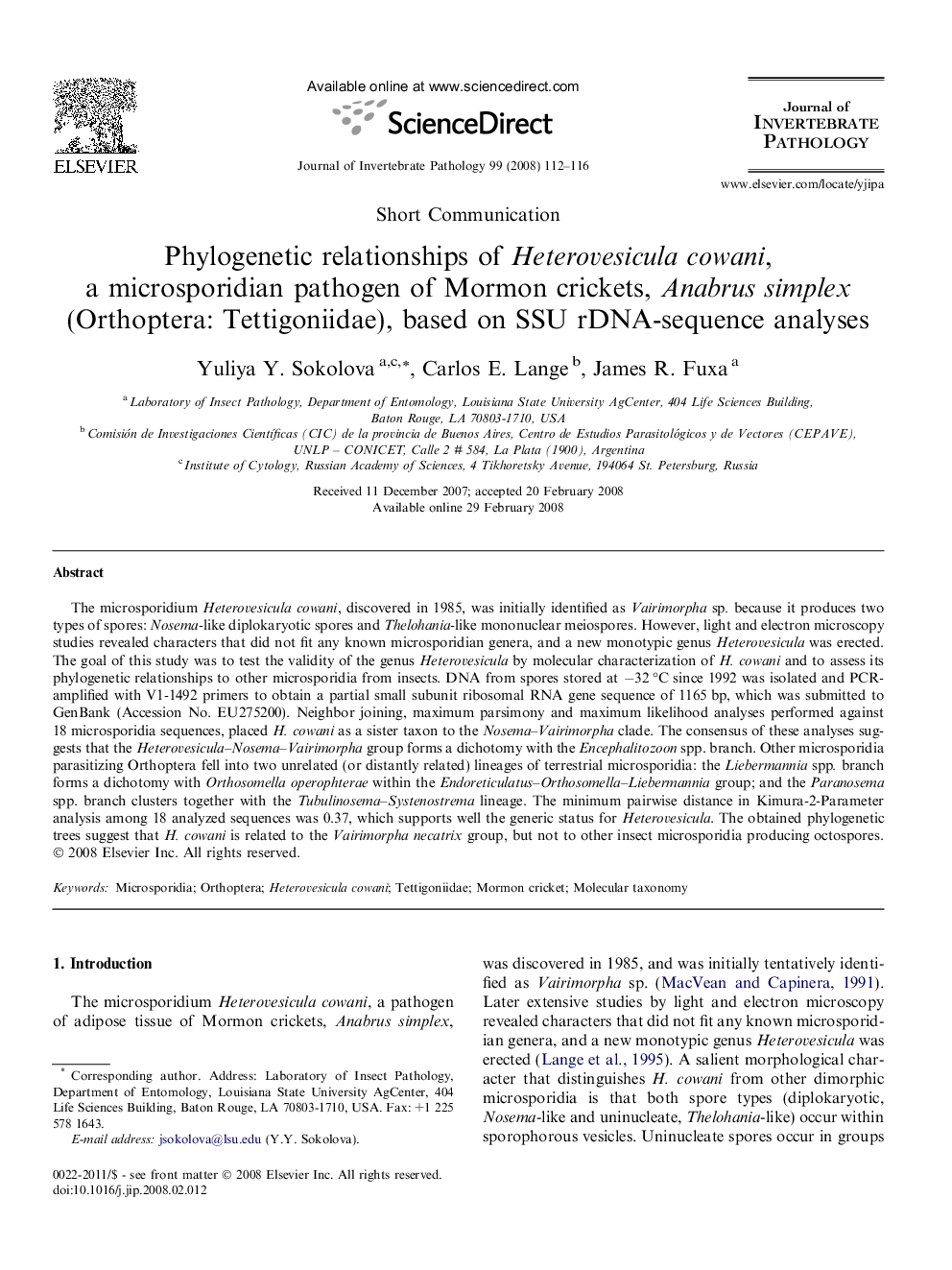| Article ID | Journal | Published Year | Pages | File Type |
|---|---|---|---|---|
| 4558421 | Journal of Invertebrate Pathology | 2008 | 5 Pages |
The microsporidium Heterovesicula cowani, discovered in 1985, was initially identified as Vairimorpha sp. because it produces two types of spores: Nosema-like diplokaryotic spores and Thelohania-like mononuclear meiospores. However, light and electron microscopy studies revealed characters that did not fit any known microsporidian genera, and a new monotypic genus Heterovesicula was erected. The goal of this study was to test the validity of the genus Heterovesicula by molecular characterization of H. cowani and to assess its phylogenetic relationships to other microsporidia from insects. DNA from spores stored at −32 °C since 1992 was isolated and PCR-amplified with V1-1492 primers to obtain a partial small subunit ribosomal RNA gene sequence of 1165 bp, which was submitted to GenBank (Accession No. EU275200). Neighbor joining, maximum parsimony and maximum likelihood analyses performed against 18 microsporidia sequences, placed H. cowani as a sister taxon to the Nosema–Vairimorpha clade. The consensus of these analyses suggests that the Heterovesicula–Nosema–Vairimorpha group forms a dichotomy with the Encephalitozoon spp. branch. Other microsporidia parasitizing Orthoptera fell into two unrelated (or distantly related) lineages of terrestrial microsporidia: the Liebermannia spp. branch forms a dichotomy with Orthosomella operophterae within the Endoreticulatus–Orthosomella–Liebermannia group; and the Paranosema spp. branch clusters together with the Tubulinosema–Systenostrema lineage. The minimum pairwise distance in Kimura-2-Parameter analysis among 18 analyzed sequences was 0.37, which supports well the generic status for Heterovesicula. The obtained phylogenetic trees suggest that H. cowani is related to the Vairimorpha necatrix group, but not to other insect microsporidia producing octospores.
